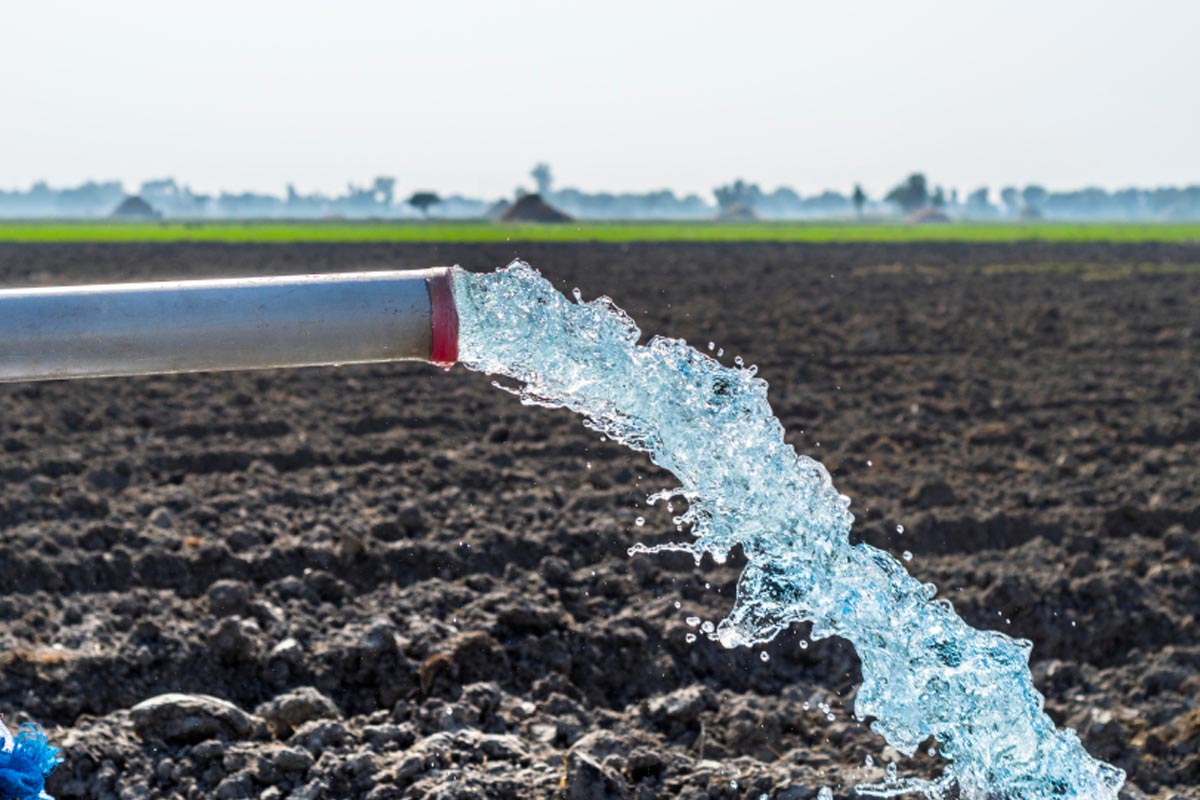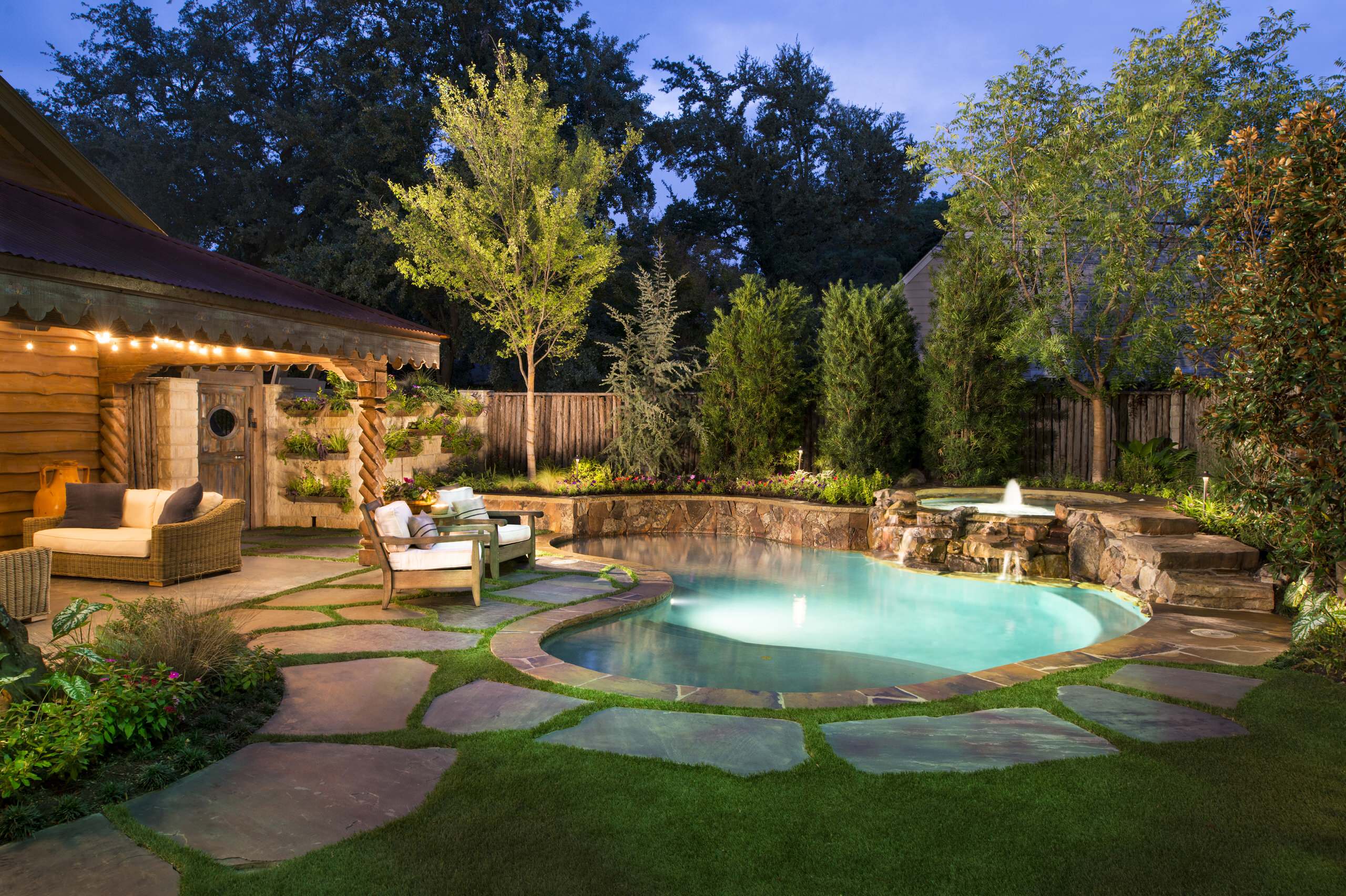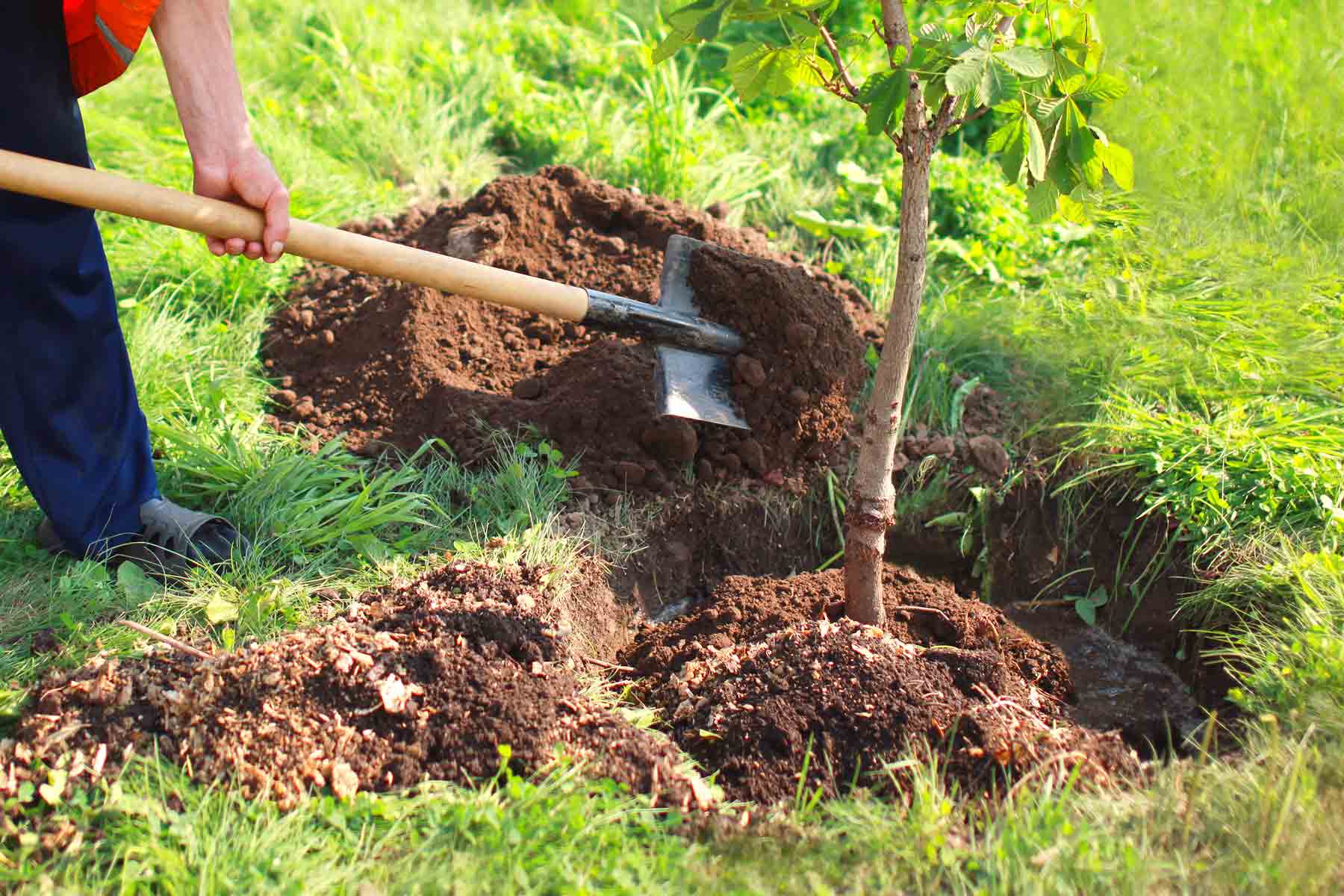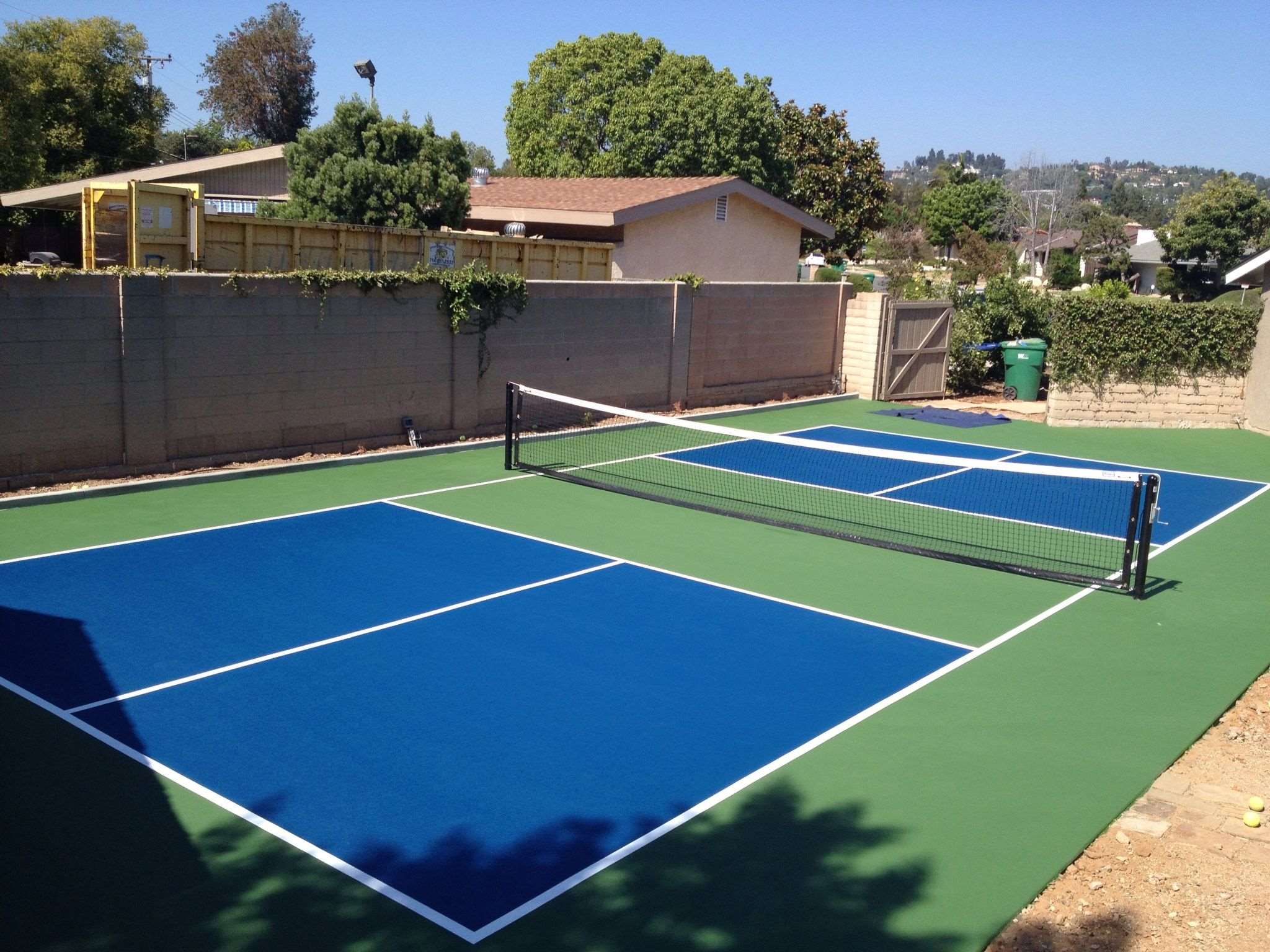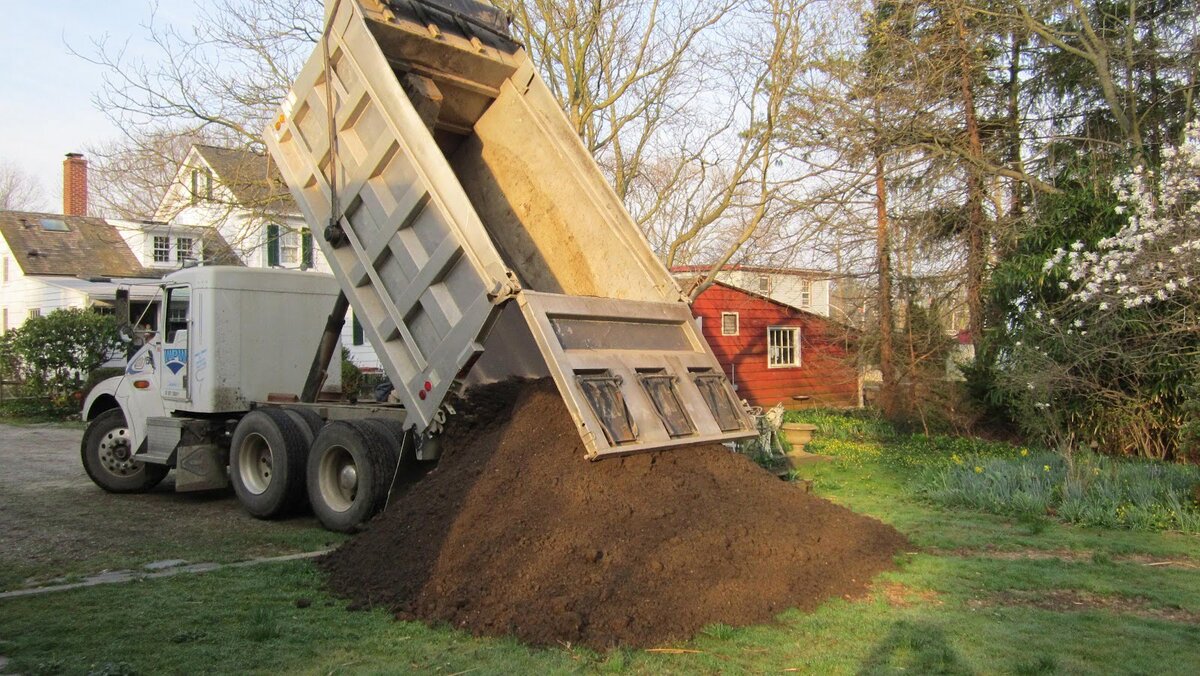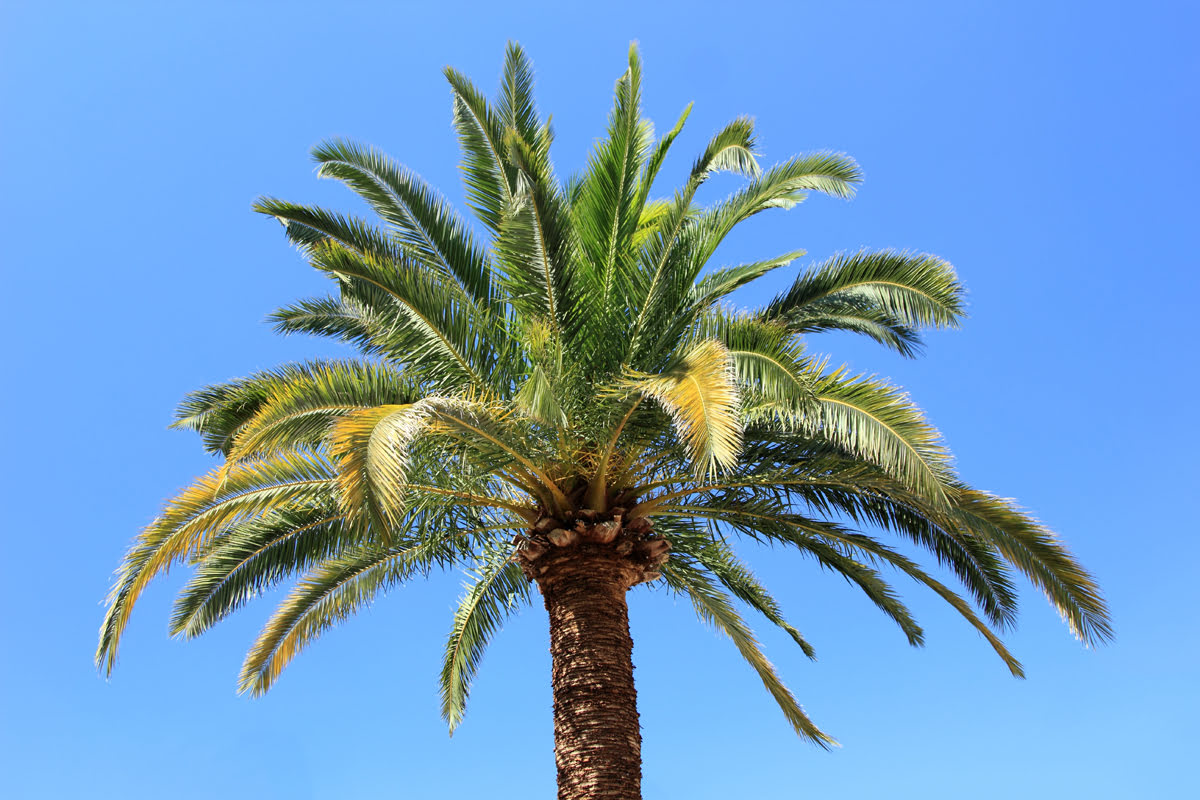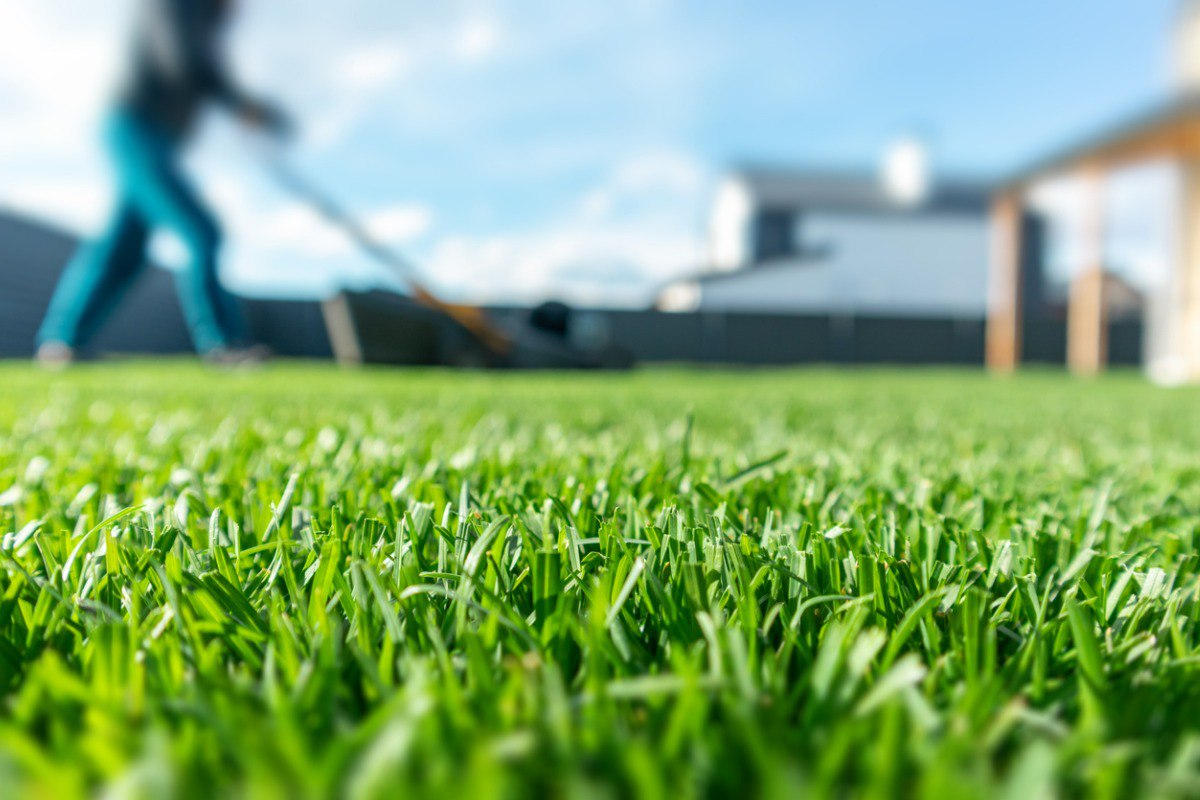Home>Garden Design>How Much Does It Cost To Put Grass In Backyard
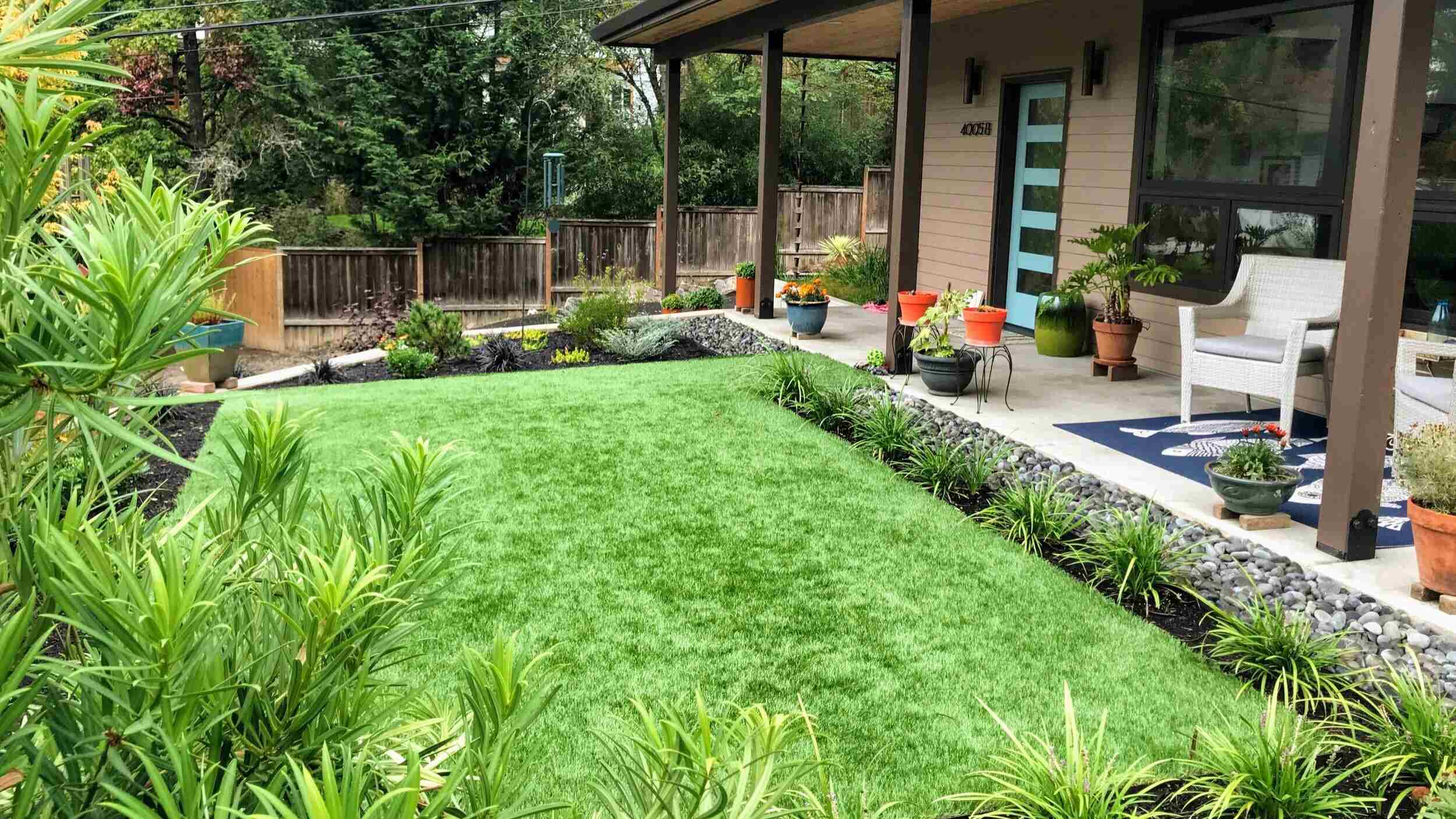

Garden Design
How Much Does It Cost To Put Grass In Backyard
Modified: January 22, 2024
Get an estimate on the cost of backyard grass installation with professional landscape design services. Transform your outdoor space with a lush, green lawn.
(Many of the links in this article redirect to a specific reviewed product. Your purchase of these products through affiliate links helps to generate commission for Chicagolandgardening.com, at no extra cost. Learn more)
Table of Contents
Introduction
Welcome to the world of landscape design! Creating a beautiful backyard with lush, green grass can transform your outdoor space into a relaxing oasis. However, before embarking on this endeavor, it’s important to understand the factors that can affect the cost of putting grass in your backyard.
The cost of installing grass in your backyard can vary depending on several factors such as the type of grass you choose, the size of your yard, and whether you decide to hire professionals or do it yourself. Additionally, there are ongoing maintenance costs to consider to keep your grass looking its best.
In this article, we will explore the different factors that can impact the cost of putting grass in your backyard. We will discuss the various types of grass available, the expenses involved in preparing the site for installation, the cost of grass and additional materials, as well as the options for professional or DIY installation. Lastly, we will delve into the ongoing maintenance costs to keep your grass healthy and vibrant.
By understanding these factors, you will be able to make informed decisions and plan your budget accordingly. So, let’s dive into the world of landscape design and explore the exciting possibilities of putting grass in your backyard!
Factors Affecting the Cost of Putting Grass in Backyard
When it comes to putting grass in your backyard, there are several key factors that can impact the overall cost of the project. Understanding these factors will help you plan and budget effectively. Let’s take a closer look at each one:
- Size of the Yard: The size of your yard is one of the major factors that will affect the cost of installing grass. Larger yards require more materials and labor, resulting in higher costs. Additionally, if your yard has uneven terrain or slopes, additional work may be needed to level the area, further increasing the expenses.
- Type of Grass: There are various types of grass available, each with its own characteristics and price range. Common types of grass include Bermuda grass, Kentucky bluegrass, and Zoysia grass. The cost of grass can vary based on factors such as its popularity, availability, and maintenance requirements. It’s important to research different grass types and choose one that suits your climate, soil conditions, and maintenance preferences.
- Site Preparation: Proper site preparation is crucial for a successful grass installation. This can involve clearing the existing vegetation, removing rocks and debris, grading the soil, and adding topsoil or soil amendments. The extent of site preparation needed will depend on the condition of your yard and its readiness for grass installation. The more extensive the preparation required, the higher the cost.
- Additional Materials: In addition to grass, there are other materials that may be needed during the installation process. This can include items such as landscaping fabric, edging, irrigation systems, and fertilizers. These materials can add to the overall cost of the project and should be considered when budgeting.
- Professional Installation vs. DIY: Another factor to consider is whether you will hire professionals or take on the installation yourself. While DIY installation may save you money on labor costs, it requires time, effort, and a certain level of expertise. Hiring professionals ensures a more streamlined and efficient installation process but comes with a higher price tag for their expertise and services.
By considering these factors and evaluating your specific needs and budget, you can determine the overall cost of putting grass in your backyard. Each factor plays a crucial role in the final expenses, so it’s essential to prioritize accordingly and make informed decisions.
Types of Grass
Choosing the right type of grass is essential for a successful backyard transformation. Different types of grass have varying characteristics, appearances, and maintenance requirements. Let’s explore some popular types of grass to help you make an informed decision:
- Bermuda Grass: Bermuda grass is a warm-season grass known for its excellent durability and ability to withstand high foot traffic. It has a dark green color and spreads quickly to form a thick carpet-like turf. Bermuda grass thrives in warm climates with full sun exposure and requires regular mowing and watering.
- Kentucky Bluegrass: Kentucky bluegrass is a cool-season grass that has a lush, dark green appearance. It is known for its fine texture and shade tolerance. Kentucky bluegrass requires adequate water and regular maintenance but can create a beautiful and soft lawn in cooler regions.
- Zoysia Grass: Zoysia grass is a warm-season grass that offers excellent drought tolerance and weed resistance. It has a dense texture and a medium green color. Zoysia grass requires less water and maintenance compared to other grass types, making it a popular choice for homeowners seeking a low-maintenance lawn.
- Fescue Grass: Fescue grass is a cool-season grass that performs well in shaded areas. It has a coarse texture and a light green color. Fescue grass is known for its excellent tolerance to cold weather and requires less water compared to other grass types. It is a great option for homeowners in regions with cooler climates.
- Centipede Grass: Centipede grass is a warm-season grass that offers exceptional low-maintenance characteristics. It has a pale green color and spreads by stolons. Centipede grass requires less fertilizer and water compared to other grass types, making it a cost-effective choice for homeowners with a smaller budget.
These are just a few examples of the many grass types available. When choosing the right grass for your backyard, consider factors like climate, sunlight exposure, soil type, maintenance preferences, and intended use of the lawn. It is also helpful to consult with a lawn care professional or local nursery to determine the best grass variety that suits your specific needs and growing conditions.
Cost of Preparing the Site
Before installing grass in your backyard, it is important to properly prepare the site to ensure optimal growth and longevity of the turf. Site preparation costs can vary depending on the condition of the area and the extent of work required. Here are some potential expenses to consider when budgeting for site preparation:
- Clearing and Removal: If your backyard has existing vegetation, such as weeds, shrubs, or trees, you may need to clear the area before laying down the grass. Clearing and removal costs can vary depending on the size of the yard and the amount of vegetation that needs to be removed.
- Grading and Leveling: If your yard has uneven terrain or uneven soil levels, grading and leveling may be necessary to create a smooth surface. This process involves reshaping the land to ensure proper water drainage and prevent any low spots or high areas. Grading and leveling costs can vary based on the size and complexity of the area.
- Soil Preparation: Depending on the quality of your existing soil, you may need to amend it with additional topsoil or soil additives. This helps provide a fertile and well-draining foundation for the grass to thrive. Soil preparation costs can vary depending on the size of the yard and the quantity of soil amendments required.
- Weed and Pest Control: Depending on the state of your yard, you may need to address any weed or pest issues before installing the grass. This can involve applying herbicides or insecticides to eliminate unwanted vegetation and pests. The cost of weed and pest control will depend on the size of the area and the severity of the infestation.
- Equipment Rental: If you decide to tackle the site preparation yourself, you may need to rent equipment such as a sod cutter, tiller, or soil roller. Equipment rental costs should be factored into your overall budget, especially if you do not already own the necessary tools.
It is important to evaluate the condition of your yard and determine the extent of site preparation required. In some cases, professional assistance may be recommended, particularly for extensive clearing, grading, or soil preparation. Getting multiple quotes from landscaping professionals will give you a better idea of the potential costs involved in preparing your site for grass installation.
Cost of Grass Installation
The cost of grass installation is a significant component of the overall expenses associated with putting grass in your backyard. The total cost will depend on several factors, including the type of grass chosen, the size of the yard, and whether you hire professionals or opt for a DIY approach. Here are some key points to consider:
- Cost per Square Foot: The cost of the grass itself is typically calculated per square foot. The price can vary depending on the type of grass and its availability. Popular and more in-demand grass varieties may be priced higher compared to others. It is essential to research and compare prices from different suppliers to ensure you are getting the best value.
- Sod vs. Seed: There are two primary options for grass installation: sod or seed. Sod is pre-grown grass that is rolled out onto your prepared soil, providing an instant lawn. Seed, on the other hand, requires time and care to establish and grow into a full-fledged lawn. Sod is generally more expensive than seed, considering the costs associated with growing and transporting mature grass. However, it offers immediate results and saves time in establishing a lush lawn.
- Labor Costs: Labor costs can significantly impact the total cost of grass installation. Depending on your preference, you can choose to hire professionals for the entire installation process or undertake the project yourself. Hiring professionals will involve additional labor costs, but it ensures a faster and more efficient installation. DIY installation can save money on labor, but it requires adequate knowledge and time commitment.
- Additional Expenses: It’s important to consider any additional expenses that may arise during the grass installation process. This can include items such as edging materials, landscape fabric, and soil amendments. These costs should be factored into your budget to ensure a comprehensive estimate.
To get an accurate estimate of the cost of grass installation, it is recommended to obtain quotes from different suppliers and landscapers. Be sure to provide them with specific details about your yard’s size and requirements. Additionally, if you decide to hire professionals, ask for a breakdown of the costs, including labor, materials, and any additional services they may provide.
By carefully considering the cost of grass installation, you can plan your budget effectively and ensure a successful and beautiful transformation of your backyard.
Cost of Additional Materials
In addition to grass and site preparation, there are several additional materials that may be needed to complete the grass installation process. These materials can add to the overall cost of the project. Let’s explore some common additional materials and their associated costs:
- Landscaping Fabric: Landscaping fabric, also known as weed barrier, is often used under the grass to prevent weed growth and promote proper drainage. The cost of landscaping fabric will depend on the size of your yard and the quality of the fabric chosen.
- Edging: Edging materials are used to create defined borders between the grass and other landscaping features. These can include metal, plastic, or stone edging options. The cost of edging materials will depend on the length and type of edging chosen.
- Irrigation System: An irrigation system may be necessary to ensure proper watering of the grass. This can include sprinklers, pipes, timers, and controllers. The cost of an irrigation system will depend on the size of your yard and the complexity of the system. Consulting with a professional can help determine the most efficient and cost-effective irrigation solution for your lawn.
- Fertilizers and Soil Amendments: Depending on the quality of your soil, you may need to add fertilizers and soil amendments to promote healthy grass growth. Costs for fertilizers and soil amendments will vary depending on the size of your yard and the specific products chosen.
When budgeting for additional materials, it is important to assess the specific needs of your yard. Consider factors such as the size of the area, the existing soil condition, and any specific requirements for your chosen grass type. It’s also advisable to research and compare prices from different suppliers to ensure you are getting the best value for your money.
By accounting for the cost of additional materials in your budget, you can ensure that you have everything you need to complete a successful grass installation and create a beautiful and thriving lawn in your backyard.
Cost of Professional Installation
When it comes to installing grass in your backyard, hiring professionals can save you time and ensure a high-quality result. However, it is important to consider the cost of professional installation when planning your budget. The cost of professional installation can vary depending on several factors:
- Size of the Yard: The size of your yard is one of the primary factors that will impact the cost of professional installation. Larger yards require more materials, labor, and time, which can increase the overall cost of the project.
- Type of Grass: The type of grass you choose can also affect the cost of professional installation. Some grass varieties require more expertise and maintenance, which may result in higher installation costs.
- Site Preparation: If your yard requires extensive site preparation, such as clearing, grading, or soil amendment, it may increase the cost of professional installation. These additional steps take time and effort, which can impact the overall pricing.
- Labor and Expertise: Hiring professionals ensures that experienced and skilled individuals will handle the grass installation process. This expertise comes at a cost, as labor rates will vary depending on the region and the complexity of the project.
It is recommended to get multiple quotes from different landscaping companies to compare prices and services. When evaluating the cost of professional installation, consider the reputation and experience of the company, as well as any additional services they may offer, such as site preparation, ongoing maintenance, or warranty options.
While professional installation may come with a higher price tag, it offers several advantages. Professionals have the knowledge and equipment to tackle site preparation, ensure proper grading, and install the grass accurately. This can lead to a more efficient and successful installation, saving you time and potential headaches in the long run.
It’s important to assess your budget and the specific needs of your project before deciding on professional installation. If you have a large or complex yard, lack the necessary skills or time, or simply want an expert touch, investing in professional installation may be worth considering.
Cost of DIY Installation
If you’re looking to save money and enjoy a hands-on approach to grass installation, opting for a DIY (do-it-yourself) installation can be a viable option. DIY installation allows you to take control of the process and tailor it to your preferences. However, there are still costs to consider when embarking on a DIY installation:
- Materials: The cost of materials is a significant component of DIY installation. This includes the cost of grass, soil amendments, landscaping fabric, edging, and any additional materials required. Researching and comparing prices from different suppliers can help you find the best deals and ensure you stay within your budget.
- Equipment Rental or Purchase: DIY installation may require the use of specific equipment to prepare the site and lay the grass. Depending on the size of your project, you may need to rent or purchase tools such as a sod cutter, tiller, wheelbarrow, and rake. The cost of equipment rental or purchase should be factored into your budget.
- Time and Effort: DIY installation requires time and effort on your part. You will need to dedicate several hours, or even days, to properly prepare the site, lay the grass, and ensure its establishment. While there may not be a direct monetary cost associated with this, it’s important to consider the value of your time and the physical exertion involved.
It’s crucial to approach DIY installation with a realistic understanding of your abilities and the scope of the project. You will need to educate yourself on proper installation techniques, including site preparation, soil amendments, and maintenance practices. Lack of knowledge or experience can lead to costly mistakes or an unsuccessful installation.
However, there are benefits to DIY installation, such as the satisfaction of creating your own lawn and potentially remaining within a tight budget. It also allows you to have complete control over the process and make adjustments as needed.
Before choosing DIY installation, consider the size and complexity of your project, your level of expertise, and the time and effort you are willing to invest. Additionally, ensure that you have access to the necessary tools and materials to complete the installation successfully.
By carefully evaluating these factors and planning accordingly, you can embark on a DIY grass installation project that fits your budget and personal preferences.
Maintenance Costs
Once you have successfully installed grass in your backyard, ongoing maintenance is essential to keep it healthy and vibrant. While the specific maintenance requirements and associated costs may vary depending on the type of grass and region, here are some general maintenance costs to consider:
- Mowing: Regular mowing is necessary to maintain the optimal height of the grass and promote healthy growth. This may require investing in a lawnmower or hiring a professional lawn care service. The frequency of mowing will depend on the grass type and its growth rate.
- Watering: Proper watering is crucial to prevent under or over-drying of the grass. Watering requirements will vary depending on the climate, time of year, and grass type. Watering costs can include water bills, irrigation system maintenance, or the use of sprinklers.
- Fertilizing: To ensure proper nutrition, periodic fertilizing is necessary. This helps replenish nutrients in the soil and promote healthy grass growth. Fertilizer costs will vary based on the type of fertilizer and the size of your lawn. It may be beneficial to consult with a lawn care professional to determine the appropriate fertilizer schedule for your grass type.
- Weeding: Weeds can disrupt the health and appearance of your grass, so regular weeding is important. Weeding costs can involve the purchase of weed control products or the hiring of a professional service to remove weeds and maintain a weed-free lawn.
- Aeration and Overseeding: Over time, the soil in your yard may become compacted, making it harder for the grass to absorb water and nutrients. Aeration involves creating small holes in the soil to promote better circulation. Overseeding can be done to introduce new grass seeds to fill in any thin or bare areas. These maintenance tasks may require renting equipment or hiring a professional.
It’s important to note that the specific maintenance requirements and associated costs may vary depending on your location, climate, and grass type. Consulting with local lawn care professionals or researching the specific needs of your chosen grass variety can help you estimate the maintenance costs involved.
Proper maintenance is vital for the long-term health and appearance of your lawn. By budgeting for ongoing maintenance costs, you can ensure that your grass remains lush, green, and beautiful for years to come.
Conclusion
Putting grass in your backyard can transform it into a beautiful and inviting space. However, it’s important to consider the various factors that can affect the overall cost of the project. By understanding these factors, you can plan and budget effectively. Let’s recap what we’ve covered:
We explored the factors that can impact the cost of putting grass in your backyard, such as the size of the yard, the type of grass chosen, and the extent of site preparation required. We discussed the different types of grass available and their unique characteristics. Additionally, we examined the costs associated with site preparation, grass installation, and the materials needed for the project.
We also examined the options of professional installation versus DIY installation, highlighting the advantages and considerations of each. Furthermore, we discussed the ongoing maintenance costs involved in keeping your grass healthy and vibrant.
When embarking on your grass installation project, it’s important to assess your specific needs, preferences, and budget. Researching different suppliers, obtaining multiple quotes, and consulting with professionals can help you make informed decisions and ensure that your backyard is transformed into a beautiful and sustainable lawn.
Remember that the cost of putting grass in your backyard is an investment in the beauty and enjoyment of your outdoor space. With proper planning, budgeting, and ongoing maintenance, you can create a lush and vibrant green oasis that enhances the overall value and appeal of your home.

